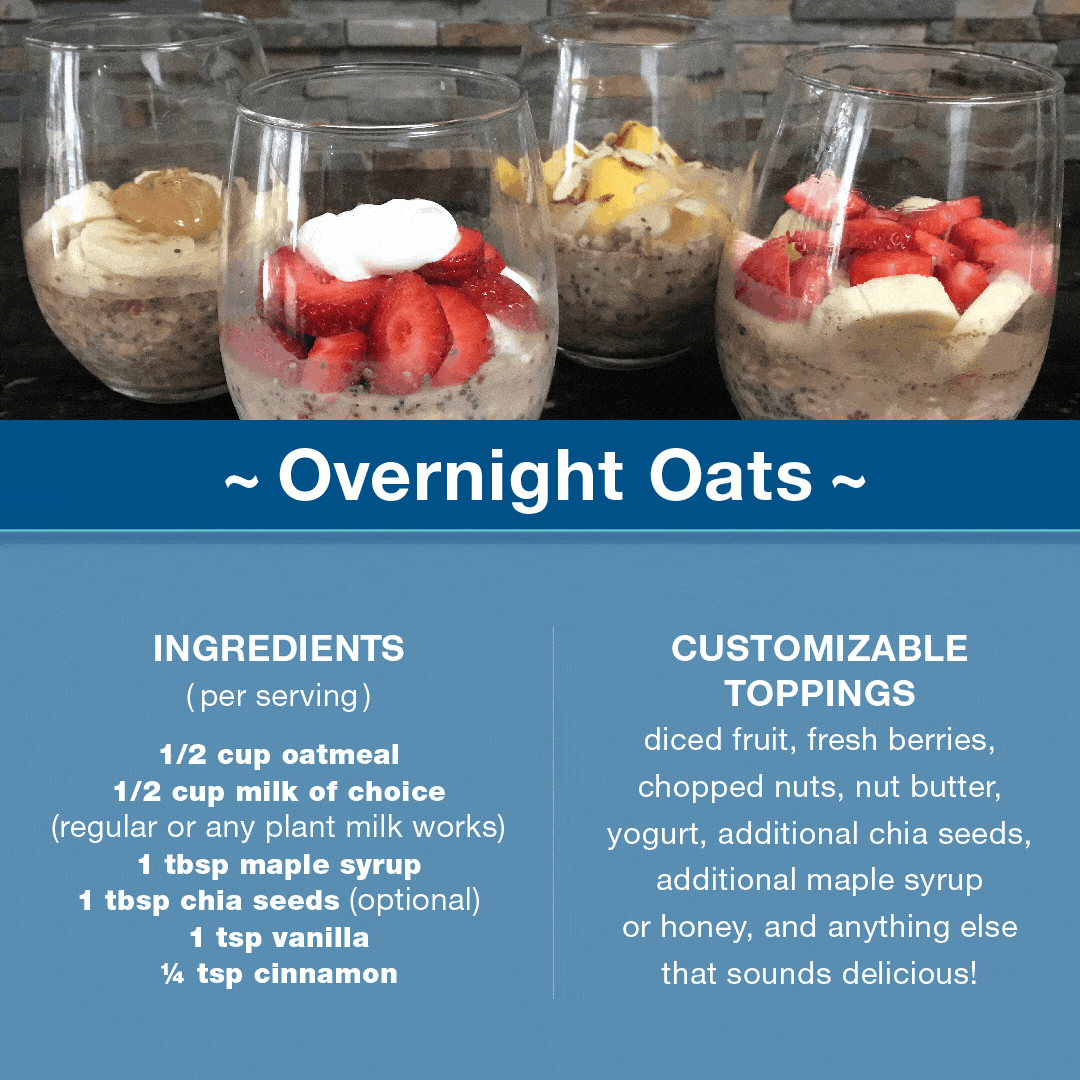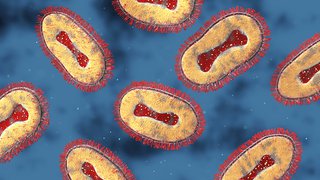Quarantine cuisine: Easy meals to support a healthy immune system
April 8, 2020

I was working at home the other night when I got an unusual text from my colleague, Ling Chu, M.D. "I've got a can of white beans, a can of anchovies, a box of pasta and a can of chicken broth in my pantry. What can I make with that?"
COVID-19 has led to limited food budgets, and shelter-in-place adds a layer of complexity to buying and planning meals. At the same time, we're bombarded with ads shouting "Take this supplement to boost your immunity!" So, what's a person to do?
- Many people give in to the pressure of panic-buying. Along with toilet paper, we stock up on foods we might not usually buy, such as:
- Canned vegetables
- Shelf-stable basics, like bulk dry beans
- Excessive produce
- Dry grains like oats and rice
- Canned meat or fish (like anchovies…)
Filling your cart with the basics might make you feel secure in the short term. But as Dr. Chu found, it's a different ballgame when you get these items home. Can you make healthy meals with shelf-stable foods? Will the family eat your creation? And does food really boost our immunity? Yes, yes, and yes – over time.
I field questions like these often as director of UT Southwestern’s Culinary Medicine Program. We help people transform food preparation and eating into a healthier part of their daily lives. The program focuses on creating budget-friendly meals with shelf-stable ingredients, as well as mindful eating practices.
The COVID-19 quarantine is the perfect time to build a healthier relationship with food and discover ways to make easy, affordable, nutritious, and delicious meals with shelf-stable products at home.
But first, we need to clear up a common misperception about "boosting immunity."
There's no way to fast-track a healthier immune system
There's a lot of buzz right now about ways to boost immunity to fight COVID-19. But there is no one superfood, supplement, or “magic bullet” that will render you impervious to viruses and respiratory infections.

Especially during an outbreak, a short-term healthy eating plan isn't enough to reduce your risk. A sustained, long-game approach to building immunity makes more sense.
When we get sick, much of the damage that occurs in the body is not due to the virus itself but to the body's immune response. The body may overreact as it tries to contain the virus, allowing what might have been just a cough or the sniffles to progress into a serious lower respiratory infection.
Strengthening your immune system through multiple self-care channels – healthy diet, regular exercise, and mental health care – is the most effective strategy. And building a healthy diet begins with focusing on what we eat and our relationship with food.
Nutrition + intention
Eating a balanced diet is important for bolstering our immune systems over time. "Balanced" means eating strategically to nourish your body and mind. Two ways to achieve this include following the Mediterranean nutrition plan and practicing “intentional eating.”
The Mediterranean diet focuses on plant-based nutrition with less emphasis on meat and dairy – perfect for quarantine, because many key ingredients are shelf stable and likely in your pantry already.

Research has shown that following the Mediterranean diet can help reduce risks for heart attack, stroke, and death by approximately 30% over less than five years. The diet has also been linked with reduced risks of cancer, Alzheimer's, and Parkinson's disease. One study even refers to the diet as "the gold standard in preventive medicine" for its combination of anti-inflammatory and nutritious foods.
To get started, we recommend this six-step plan. You might try one step at a time, due to limited shopping options:
- Try to eat the rainbow – 5 to 6 servings a day of different colored fruits and vegetables. Each color provides unique nutrients and immune-supporting antioxidants. Frozen or canned is fine if the food is packed in natural juice or water.
- Swap white grains (rice, flour, pasta) and cereals (sugars) for whole-grain options, such as oats, whole wheat bread, quinoa, and brown rice. Aim for five to six servings a day.
- Eat legumes such as beans, lentils, and peanuts to get more fiber and minerals. Try to get one serving a day.
- Cook with olive oil and snack on nuts and seeds. These "healthy fats" also provide micronutrients. Limit olive oil to less than 4 tablespoons a day, and nuts/seeds to about a handful daily.
- Have meat just once a day or less. Replace red meat with fish or leaner options, like chicken or turkey. Keep red meat consumption to less than twice a week.
- Drink eight to 10 glasses of water daily.
Quarantine Cuisine: Easy Bean Soup
Dr. Jaclyn Albin, M.D., Director of the Culinary Medicine Program at UT Southwestern, provides a recipe for hearty soup that can be made from items in your "pandemic pantry" during COVID-19.
Following this eating pattern gives us adequate amounts of micronutrients that are linked with immune system health, such as:
- Zinc: Important for wound healing. Found in lean meats, seafood, milk, whole grains, beans, seeds, and nuts
- Iron: Aids in non-specific immunity, the body’s first line of defense. Found in lentils, spinach, tofu, and white beans
- Vitamin A: Helps regulate our immune response. Found in sweet potatoes, carrots, red bell pepper, spinach, black-eye peas, and mango
- Vitamin C: Helps protect cells from oxidative stress, which is a product of infection or chronic inflammation. Found in broccoli, cantaloupe, kale, oranges, strawberries, tomatoes, guava, and lychee
- Vitamin E: Also helps defend against oxidative stress. Found in nuts, seeds, wheat germ, green leafy vegetables, avocado, and shrimp
- Vitamin B6: Supports more efficient reactions between different parts of our immune system. Found in green vegetables, chickpeas, and cold-water fish such as tuna or salmon
How to eat a balanced diet during the pandemic
Physically apart, together at heart. Nearly every culture associates meal times with togetherness. Thanks to video call services like Zoom, Skype, or Facetime, we can still convene, shelter-in-place-style, to virtually prepare and enjoy meals together. Several of our medical students and internal teams do this weekly to stay connected.

Get the kids involved. If you've struggled to get your kids to eat immune-supporting foods, now is the perfect time to involve them in choosing and preparing meals. Recent research shows children are more likely to eat healthier foods if they help prepare meals. Another happy byproduct? Kids who cook at home report feeling more positive and in control than those whose parents cooked for them.
Cook in bulk. When life is busy, we don't always feel like cooking. And in the midst of a crisis, you're likely to feel less motivated on certain days. Plan for those times by cooking double batches of simple, nourishing meals on days when you have the bandwidth. Ask family and friends to suggest meal ideas to avoid getting bored. Or look up recipes that call for just a few ingredients. Try Supercook to find tasty recipes based on items you have on hand.
Extend your budget. Many healthy foods freeze well. Soups and stews are a go-to in my house – they're easy to make in bulk, freeze, then heat-and-eat later. You can even freeze bread, tortillas, and milk to make them last longer. Produce also freezes well and then can be used as a great filler for smoothies.
Maximize your produce budget by making your own vegetable stock from scraps. As you chop vegetables, save the ends and skins in a container. Freeze them and, when the container gets full, boil the bits in water. Strain out the chunks and save the liquid – voila! You'll have a low-sodium stock to add to soups and stews.
Find substitutes for missing ingredients. No butter? No problem. Often, you can swap less healthy ingredients for more nutritious alternatives. For example, applesauce can be swapped for butter in baking recipes. Lentils or beans can replace meat in your favorite casserole. And you can put oatmeal in the blender to make flour.
Just Google how much of the swapped ingredient to use. Not every recipe will be perfect (or edible!) on the first try. But with a little practice, you'll become a budget-friendly cooking aficionado.
Nutrition lessons from the quarantine
For many of us, this may be the first time we’ve had to think about our favorite foods not being readily available. While challenging, the quarantine is an opportunity to reflect on what we're used to vs. what truly matters for our health.
It is also a time to practice intentional food prep and eating. One of the tenets of culinary medicine is that food preparation nourishes the soul in a similar way that food nourishes the body. Especially now, intentional food prep and eating can help us slow down, de-stress, and appreciate the simple sensations of preparing and enjoying nutritious food.
"One of the tenets of culinary medicine is that food preparation nourishes the soul in a similar way that food nourishes the body. Especially now, intentional food prep and eating can help us slow down, de-stress, and appreciate the simple sensations of preparing and enjoying nutritious food."
Turn off your devices. Focus on individual bites. Notice the smell, texture, temperature, and taste. Eating with intention makes you think about your food, how much you are eating, and why. It mediates the balance of enjoying occasional treats while avoiding the shame of accidentally eating a whole bag of chips while watching a movie.
Every day, we get an opportunity to make healthy nutrition choices. But remember that you can't be perfect every day. During the pandemic, we must cut ourselves a little slack. It's OK if the kids eat grilled cheese three times this week. Or that you sneaked a couple cookies after the family went to bed.
Start with a manageable step and have fun with it, like Dr. Chu and I did. She ended up making a white bean and anchovy stroganoff, which she said tasted great over pasta. It was simple and easy, and she texted later to say she was surprised at how tasty and nutritious is was, even with so few ingredients.
To find out whether you or a loved one might benefit from a virtual nutrition consultation, call 214-645-8300 or request an appointment online.
Registered dietician Milette D. Siler and Ling Chu, M.D., contributed to this report.
Quarantine Cuisine: Oatmeal Peanut Butter Bites
Dr. Jaclyn Albin, Director of Culinary Medicine and an internal medicine and pediatrics physician at UT Southwestern, demonstrates how to make an easy snack for the family with items you probably have in your pantry during the COVID-19 pandemic.
Quarantine Cuisine: Roasting Veggies
Dr. Jaclyn Albin, M.D., Director of the Culinary Medicine Program at UT Southwestern, demonstrates some easy and healthy ways to cook, including roasting Brussels sprouts, during the COVID-19 shelter-in-place order.











